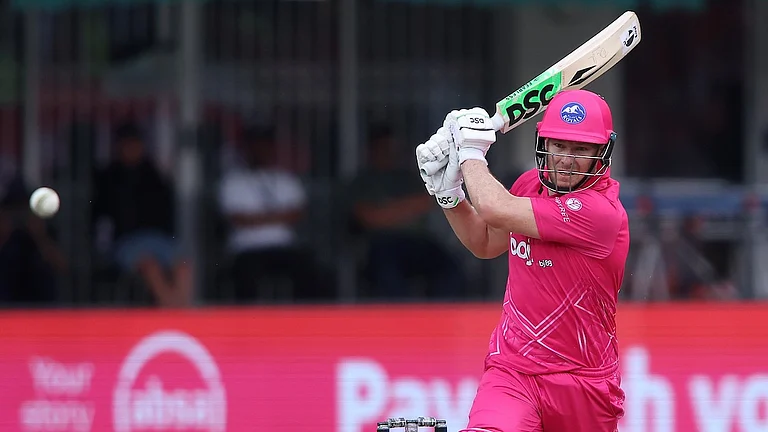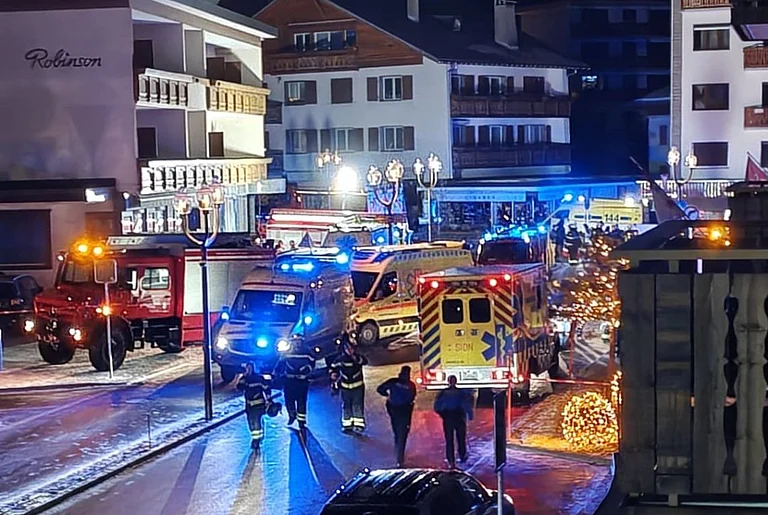I must have been around six when, one day, my father, on returning from the village haat, pushed into my excited hands the colourful feather of a wild bird that he must have picked up from the road. On another day, my father brought a coconut shell and pointed out to me two ‘eyes’ on its round, hairy surface. Then, he drew a moustache on it to make it look like a grimacing monkey.
These two seemingly insignificant moments were the first lessons that made me believe how the most ordinary of things could be elevated to an extraordinary level with a little touch of creativity. It planted in my mind the very first seed of a sense of beauty and aesthetics.
In those days, almost everything fascinated me: long, endless lines of ever-busy ants, a star-filled sky, palpitating dogs on a summer noon, rains, floating clouds. No wonder, my attention was less on the blackboard and more out of the window. July, the beginning of school session, as the first monsoon rains hit the earth of my small town, surrounded by three hills and the Mahanadi river passing by, the earth smelling of poetry. Only the Literature class had a hold over me because of the flights of fancy it allowed and the way it opened the doors of my imagination.
I remember a poet once visited our school to perform and recite poetry on stage. Dressed immaculately with a colourful pagdi, golden-bordered jacket and shining pyjamas; his speciality was that he could instantly recite a poem on just about anything. Our class teacher had collected 25 paise from each one of us to pay the poet and honour him. Such poets used to move from place to place, entertaining people even at bus stops. The locals took good care of them, providing them food and board.
By then, I had realised that words were much more than simply ‘words’. They revealed themselves in layers, shades, inflections and nuances, and had ‘electrifying’ effects when placed alongside other words in a creative design. In my small-town adolescence, there was lots of poetry in traditional folk arts performances, drawn mostly from mythologies and religious texts. Poetry was linked inextricably to our socio-cultural life.
Much later, in college, there was freedom in the air. Marx, Lenin, Kafka, class struggle, Osho entered our lexicon and suddenly the world was a much bigger place than we ever thought; more profound, more subtle, more bizarre, absurd but still beautiful. Even amidst such political pretensions, poetry was still around, nudging us to see life in its layered ambiguities.
It was already the early 90s, but ours was still a pre-globalised world in many ways, a conservative milieu with an old-world charm. Many paan shops across town used to stock Hindi pulp fiction and Odia detective series to rent out to readers who sought them for their daily fix of sleaze and the adrenaline rush they caused. All three cinema halls ran to packed houses, with a thriving market for ‘black’ tickets in the opening week. Lower middle-class entertainment revolved around the fulcrum of video-theatre-cinema halls, books and magazines, folk arts, and festivals. It was not until much later that dish antenna and multi-channel TV invaded our drawing rooms. Inside a time-warp of sorts, this sleepy town of ours had at least a dozen magazine stalls and an equal number of bookstores serving as socio-cultural hubs.
Books gave wings to my imagination and opened new doors to rich vistas. I was drawn to poetry without being aware of it. In the university central library, I bumped into anthologies by Bruce King, R. Parthasarthy, Arvind Mehrotra, Vilas Sarang and Gouri Deshpande and reputed journals exposed me to a spectacular body of work in the realm of Indian poetry in English. Poets like Jayanta Mahapatra, AK Ramanujan, and Arun Kolatkar, held me in spells.
I started sending my poems to almost every journal that published poetry. But all the poems, even the ones with nice-sounding lines, were rejected. Those were frustrating days, but I persisted and read a lot of poetry.
One afternoon, while secretly flipping through Debonair at a friend’s house, I discovered my poem in its poetry section, selected by poet Gayatri Majumder, a poem I’d sent casually as a shot in the dark and forgotten about. I couldn’t sleep that night in sheer excitement. The painful part was that I couldn’t show Debonair to my family members. In my own circle, Debonair was talked about in whispers. This, despite the fact that, a couple of semi-nude centrespreads apart, it used to have very strong literary content with the big names of Indian writing contributing to it. Publishing a poem in Debonair boosted my sagging morale, and for a long time, I was floating in the air bragging about it.
I read a lot and wrote a lot: mostly ‘false starts’. Eminent poet Jayanta Mahapatra must have rejected a dozen of my poems, before finally accepting one for The Telegraph’s colour magazine. While treading on the mysterious path of words, poets like Mahapatra and JP Das became my early mentors, guiding me through writing long-handed letters.
On the other hand, an award-winning bureaucrat poet (ironically, Odisha boasts of having the highest number of excellent poets/writers who were bureaucrats) simply refused to look at my poems when I sought his feedback on them. I felt dejected as though a beautiful door was slammed in my face. Once when poet Kamala Das returned some of my poems, and I vented to Mahapatra, he was curt, “Durga, if you think poetry will bring you instant fame and recognition, stop writing.”

I was shocked but came back to my senses, braced myself and strove to work hard on my craft. I still have some rejection letters from international journals that came in attractive envelopes with ‘rows of waves’ stamped on foreign postage stamps. Sweating profusely, the lanky postman used to look at me in awe as he handed over such letters from ‘abroad’; little knowing that these contained ‘rejection slips’, and my face would go pale in disappointment even before he turned his bicycle to pedal away. However, the months between the submission of a poem and its subsequent rejection afforded me sheer fantasy and lots of daydreaming.
Meanwhile, I had started writing poetry in Odia, which drew critical attention with mild accusations of sounding ‘Anglicised’. Being bilingual was a precarious position, a kind of ‘dhobi ka kutta’ situation where I could not belong to either language. Odia poets maintain that I am not Odia enough and in the vast ocean of Indian poetry in English, I was not even a small fish. Thus, I have been sitting ever since on the fence between two languages, belonging exactly nowhere. Around this time, Antara Dev Sen launched The Little Magazine, which showcased the best writing in regional languages. Jayanta Mahapatra revived his Chandrabhaga after a long hiatus. Indian Literature, Sahitya Akademi’s journal, was flourishing under the editorship of K. Satchidanandan. All of them published my poems, reviews and translations.
Traditionally rich in folk culture and art forms, my town always had a vibrant poetry scene. At poetry readings, and there were too many, everyone pretended to be a poet, even the ones who operated the sound system. There was this old man with a handlebar moustache, who read the same poem wherever he went.
Some local papers that don’t sell beyond hundred copies and are mostly read in the tea stalls and betel shops, used to publish poetry indiscreetly. Sometimes, the same poem twice.
One poet I know used to buy 10 copies of the paper the day his poem got published. Clutching them, he would move around the whole town showing the poem proudly, handing out copies to his friends, and returning home with the last copy.
The poetry readings were not totally pointless exercises. These strengthened and kept alive the rich tradition of celebrating poetry in our daily life. For so many of us, these readings happened to be stepping stones to the illuminating world of ‘words’. Location matters, despite the clichés, euphemisms and platitudes mouthed to the contrary. An average smartie, hobnobbing with the established biggies of Mumbai, is more visible than an Adivasi poet from Bastar or Jharkhand, who not only writes excellent poetry but is also fighting battles against the state to save the ground beneath his feet, the last straw of his existence.
(This appeared in the print edition as "The Productive Nowhere")
Durga Prasad Panda is an accomplished bilingual poet, translator and critic







.jpg?auto=format%2Ccompress&fit=max&format=webp&w=768&dpr=1.0)


















